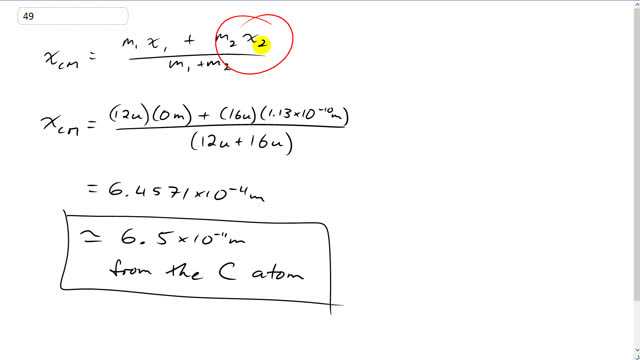
The distance between a carbon atom and an oxygen atom in the CO molecule is . How far from the carbon atom is the center of mass of the molecule?

In order to watch this solution you need to have a subscription.
This is Giancoli Answers with Mr. Dychko. The center of mass for a system with two particles is the mass of the first particle times its distance from some reference point x 1 plus the mass of the second particle times its distance from some reference point divided by the total mass of both particles. So we'll take the position of the carbon atom to be the origin so x 1 is 0— that's gonna be our reference point— and we'll multiply that by the mass of the carbon atom which is 12 atomic mass units although this term is just going to make zero anyway and then add that to the mass of the oxygen atom times its distance from the carbon atom— 1.13 times 10 to the minus 10 meters— and divide that by the total mass 16 plus 12 atomic mass units. This gives us a position for the center of mass as being 6.5 times 10 to the minus 11 meters and since the carbon atom is chosen as a reference point, this distance is from the carbon atom.